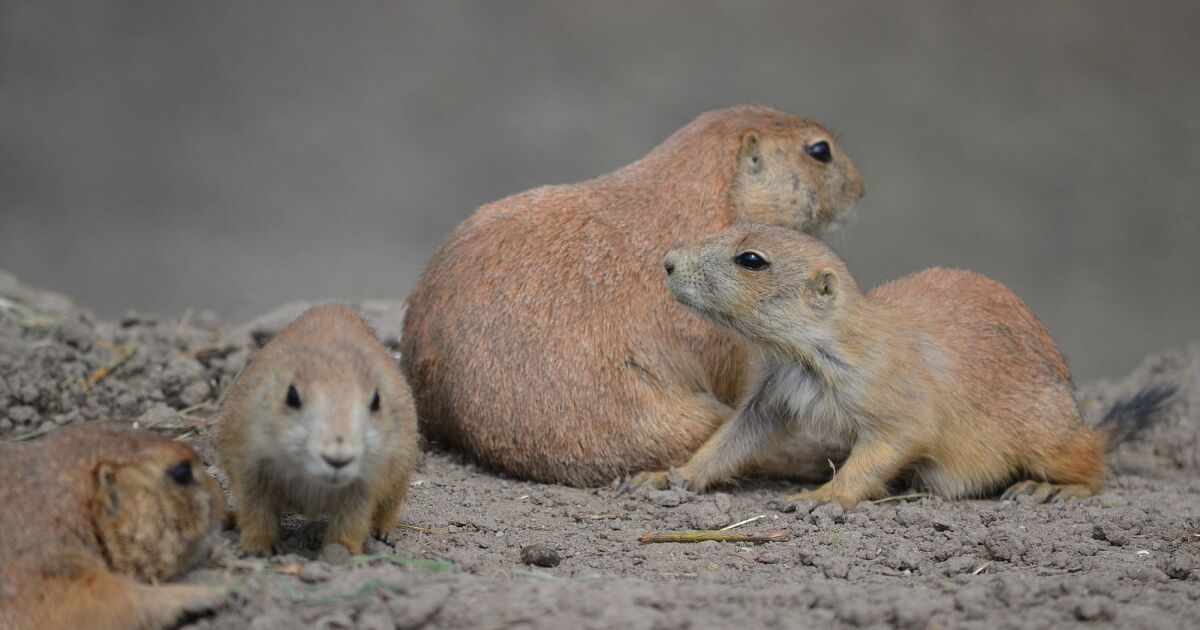

Generally speaking, the prairie dog and the Texas rancher are not allies.
Conventional wisdom among folks who raise livestock is that the prairie dog is a nuisance to be eradicated. The little rodents compete for the same grass that cattle eat, and stepping into one of their subterranean towns is a great way for a cow to break a leg.
But new research challenges the idea that prairie dogs do more harm than good for livestock. Cullom Simpson, a wildlife biologist for the Texas Parks and Wildlife Department, spoke with Texas Standard about an experiment he conducted with the Borderlands Research Institute at Sul Ross State University.
This transcript has been edited lightly for clarity:
Texas Standard: I know you do a lot of research on what goes on out there in Texas and its wild country; you conducted an experiment to look a little deeper into the relationship between livestock and prairie dogs. What exactly did you want to find out?
Cullom Simpson: I went to graduate school at Sul Ross State University with the Borderlands Research Institute. And so for my graduate thesis that was funded by the Nature Conservancy, we looked basically at cattle and prairie dog interactions and how prairie dogs influence the vegetation and then also how they influence cattle movement. Kind of the interaction between cattle movement, vegetation and prairie dogs’ grazing.
What was the setup for the experiment?
Our project took place on the Nature Conservancy’s Marathon Grasslands Preserve, which is just north of Marathon. It’s got a portion of one of the largest prairie dog colonies in the Trans-Pecos. And so the idea behind the project was to just really look at how cattle move within a prairie dog colony and then how they respond to prairie dogs altering that vegetation.
And so the way that we looked at this is we divided our property into three different pastures, and each pasture had a varying ratio of prairie dog colony to non-prairie dog colony. An example would be, one extreme was 10% prairie dog colony and 90% non-prairie dog colony. And the other extreme of that was 90% prairie dog colony and 10%, non-prairie dog colony.
So what did you find out?
Basically, we were able to put collars on these cows, and as we rotated them through these three pastures, we collected vegetation and measured a variety of nutritional variables. Prairie dogs, because of their continuous grazing and their soil disturbance, they elicit a forb response through their ground disturbance. And that forb response peaks seasonally in protein levels during the monsoonal rain seasons.
Can you tell us more about a forb response?
So because of the prairie dogs’ grazing and soil disturbance, it encourages forbs, which in layman’s terms is basically a weed. But those forbs are higher in protein than, say, grass, right? And so because we had collars on cattle, we were able to see that their use on a prairie dog colony increased during these times of increased protein content availability in the forbs and grasses.
So, if you’ve got a lot of prairie dogs, you actually may be helping your cattle with better nutrients?
Seasonally, yeah. So that’s seasonal in kind of playing on rainfall.
Do you think your research could change this contentious relationship that ranchers have with prairie dogs, sort of upend a lot of the thinking about prairie dogs?
I think that it helps ranchers that are ranching in landscapes that have prairie dogs, and in areas that don’t. I think it helps them understand why cattle may be on the prairie dog colonies during those peak rainfall periods. And then conversely, why cattle aren’t on the prairie dog colonies during times of drought.
Do you think that this might give ranchers a second thought before they try to go around eradicating prairie dogs?
I think it does. You know, a lot of ranchers around where I was, where this project was taking place, there was an appreciation, there was a recognition of the benefits that are provided. And so I think it will only help encourage and prove that.
If you found the reporting above valuable, please consider making a donation to support it here. Your gift helps pay for everything you find on texasstandard.org and KUT.org. Thanks for donating today.